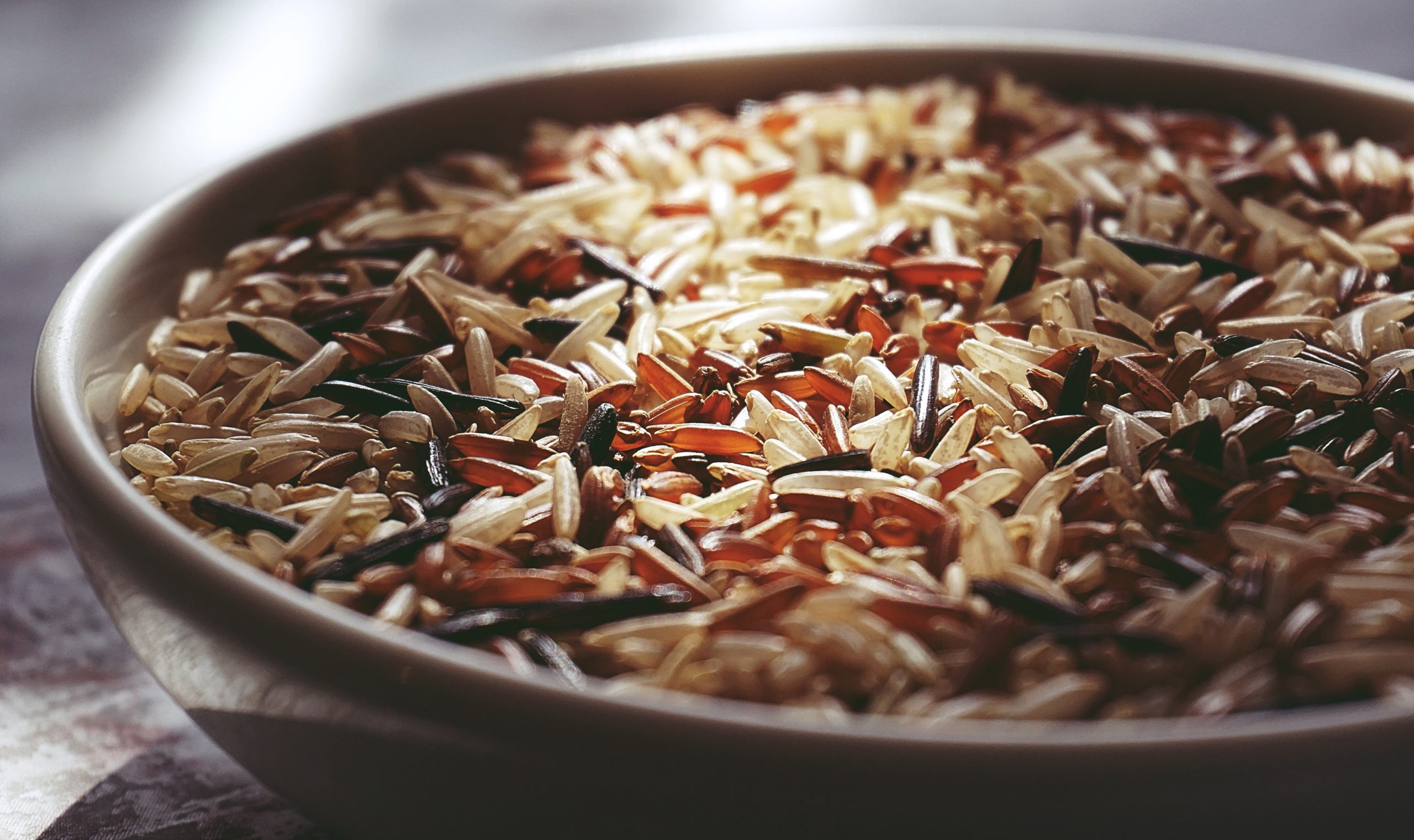Rice may be the second-most consumed grain in the world, but it has many first-place attributes. Rice comes in many different colors and lengths with each variety providing unique flavors, textures and nutrients. Each tiny rice grain is packed with fiber, starch, vitamins, minerals and even a little protein. It is also nutritionally noteworthy for what it does not contain — gluten. According to the Celiac Disease Foundation, rice is gluten free and is one of the most popular gluten-free grains for people with celiac disease. Beside its nutritional value, rice is also economical and easy to prepare. The average cost of one serving of organic white rice is $0.19 and organic brown rice is $0.25. With minimal prep and a cooking time of 30–60 minutes, rice is a healthy and easy addition to any meal. Read on to find out which rice is right for you!
White rice
The pearly white appearance of white rice is a result of the refining process. White rice begins as a whole rice kernel, but processing strips off the outer fiber-filled bran and nutrient-rich germ, leaving only the starchy endosperm. High in starch and low in fiber and nutrients does not seem ideal, however white rice has its niche. White rice is more digestible than other varieties of rice, making it a great choice for those with digestive distress. It is also an ideal source of easily absorbed, simple carbohydrate for replenishing glycogen stores post workout. White rice has a mild flavor allowing it to easily absorb the flavors of any dish.
Brown rice
Brown rice is a whole grain, meaning it contains the whole kernel — bran, germ and endosperm. Only the outermost hull has been removed. It gets its color and much of its nutrients from the intact bran and germ. According to “Nourishing Traditions” by Sally Fallon, brown rice is the highest of all grains in B vitamins. It contains the B vitamins thiamine (B1), biotin (B7), niacin (B3), pyridoxine (B6), pantothenic acid (B5) and folic acid, as well as the minerals magnesium, manganese, potassium, zinc, iron, phosphorus, calcium and copper according to “Staying Healthy with Nutrition” by Elson M Haas, MD. Brown rice has a nutty flavor and a chewier texture than white rice thanks to the outer bran and germ. It is also heartier than white rice, making it a good choice for soups and chili.
Arborio rice
Arborio is a short-grain rice originating from northern Italy. Most often Arborio rice is milled into white rice, but brown varieties are also available. Rice is categorized as short grain, medium grain or long grain. Short-grain varieties, like Arborio, contain more of the starch amylopectin, which breaks down during cooking, creating a creamy, starchy, sticky texture. Arborio is the classic choice for risotto due to its creaminess and al dente bite when cooked.
Wild rice
Wild rice is not actually part of the rice family, Oryza sativa, like white and brown rice. It is the grain of an aquatic plant that requires curing and drying prior to removal of the hull. According to the Whole Grains Council, this process results in the signature black kernel and nutty, smoky flavor as well as a more expensive price tag and longer cooking time than other varieties. Wild rice is also unique in that it bursts open when cooked, expanding to three to four times its original size. It is often used in pilafs but can also be popped like popcorn. Wild rice packs twice as much protein and more niacin (B3), riboflavin (B2), iron and phosphorus than brown rice according to “Staying Healthy with Nutrition.”
Black rice
Black rice is also called “forbidden rice” because it was reserved for emperors and royalty in ancient China. The uncooked grains are black but become deep purple when soaked and/or cooked. The deep color comes from anthocyanins. Anthocyanins are colorful antioxidants found in vegetables like red cabbage and fruits like blueberries that may reduce the risk of cardiovascular disease, cognitive decline and cancer, according to Today’s Dietitian magazine. Black rice can be used in place of brown rice for a visually stunning and antioxidant-rich dish or in desserts like rice pudding as it has a subtly sweet flavor.
Soaking rice
Just as many animals have venom, plants have chemical defenses against predators. Rice’s chemical defense is phytic acid within its bran layer. The bran layer is present in whole grain varieties of rice like brown rice, wild rice and black rice. Phytic acid is problematic because it can bind with calcium, magnesium, copper, iron and zinc in the intestines, blocking their absorption. Soaking rice in an acidic liquid before cooking is the key to neutralizing phytic acid and freeing all the nutrients locked in the grain.
Photo by Indigo & Co Photography
Related articles:
Use This Seasonal Guide To Pick The Perfect Veggies
Learn The Health Benefits Of Bell Peppers
Iconic Foods In The US: Must-Try Foods From The Northeast!
Should It Be That Color? Decoding The Color Of Our Urine

